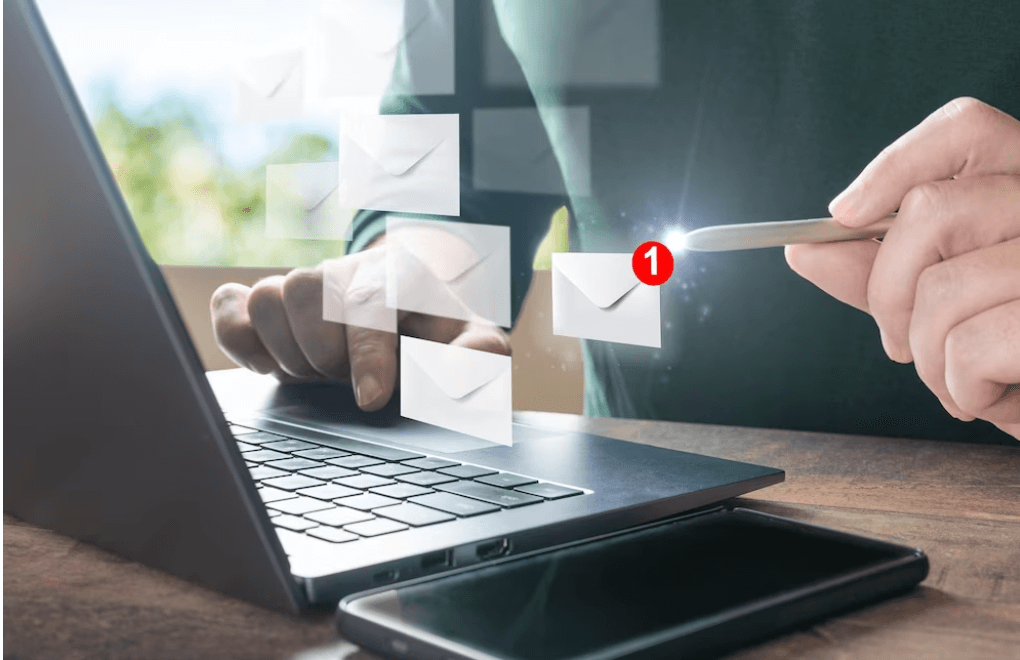In the digital age, email marketing has become an indispensable tool for businesses to connect with their customers. However, just like in personal relationships, being too clingy can drive people away. In this article, we will explore the world of email marketing and discuss how to avoid being that annoying ex who bombards their audience’s inboxes. From crafting compelling content to perfecting your timing, we’ll delve into the strategies that can make your email marketing campaigns successful and non-intrusive.
For more insights on effective email marketing strategies, check out our articles on Adhunu Marketing.
Introduction
Email marketing is a powerful tool for businesses to engage with their audience. However, like any form of communication, there’s a fine line between being informative and becoming an annoyance. In this article, we’ll explore the concept of clingy email marketing and how to strike the right balance.
Understanding the Clinginess
The Overzealous Sender
Imagine receiving multiple emails from a company in a single day, each promoting a different product. That’s the email equivalent of a clingy ex who won’t stop calling. It’s important to understand that bombarding your audience with emails can lead to irritation and unsubscribes. To avoid being labeled as the clingy ex of email marketing, it’s crucial to strike a balance and be mindful of how often you reach out to your audience.
Frequency Matters
While regular communication is essential, the frequency of your emails matters. Sending emails too often can overwhelm your subscribers, while sending them too infrequently may lead to disengagement. Finding the sweet spot is crucial. Sending emails too frequently can overwhelm your subscribers, causing them to tune out or even mark your messages as spam. On the other hand, sending emails too infrequently can lead to disengagement, with your audience forgetting who you are or losing interest in your content.
Segmentation: The Key to Personalization
Demographic Segmentation
One-size-fits-all emails rarely work. Demographic segmentation allows you to tailor your content to different age groups, genders, or locations, increasing relevance and engagement. By understanding the unique characteristics of different segments of your audience, you can tailor your email content to be more relevant and engaging.
Behavioral Segmentation
Understanding how your subscribers interact with your emails can be a game-changer. Behavioral segmentation lets you send targeted content based on their actions, ensuring you’re delivering what they want. For instance, you can identify subscribers who frequently open and click on your product-related emails. These individuals exhibit a strong interest in your offerings, making them prime candidates for receiving targeted promotions.
Crafting Engaging Content
Relevance Is King
Irrelevant content is a major turn-off. Ensure your emails are filled with content that resonates with your audience’s interests, needs, and pain points. To keep them engaged and eager to open your emails, it’s vital to ensure that the content you deliver speaks directly to their specific concerns.
The Power of Storytelling
Storytelling is a compelling way to connect with your audience on a personal level. Share success stories, customer testimonials, or the journey of your brand to create an emotional bond. By weaving narratives into your emails, you can transform your communication from a bland monologue into an engaging dialogue.
Perfecting Timing and Frequency
A Time for Every Audience
Understanding when your audience is most active can significantly impact your open and click-through rates. Timing your emails right ensures they don’t get lost in the inbox. Imagine sending an email at a time when your subscribers are least likely to check their inbox—it’s like whispering in a crowded room; your message goes unheard. Invest the time in understanding your specific audience’s behavior to perfect the timing of your email campaigns.
The Art of A/B Testing
Experimentation is key. Use A/B testing to determine the best send times and frequencies for your audience, optimizing your email strategy. Here’s why it’s crucial:
– Determining Optimal Send Times
– Optimizing Email Content
– Segment-Specific Testing
Optimizing for Mobile
With most emails being opened on mobile devices, it’s essential to ensure your emails are mobile-friendly. A non-responsive design can quickly frustrate subscribers. Failing to do so can result in frustrated subscribers and missed opportunities. Here’s how to optimize for mobile: – Responsive Design , Mobile Preview.
Subject Lines That Grab Attention
Your subject line is the first thing subscribers see. Craft attention-grabbing subject lines that pique curiosity or offer value, making subscribers eager to open your emails.
The Unsubscribe Option: Make it Easy
While it may seem counterintuitive, making the unsubscribe process easy can actually improve your email reputation. It shows respect for your subscribers’ choices.
Monitoring and Adapting
Analytics: Your Best Friend
Pay attention to email analytics. Track open rates, click-through rates, and conversion rates to gauge the effectiveness of your campaigns and make necessary adjustments.
Feedback and Surveys
Direct feedback from your subscribers can provide valuable insights. Conduct surveys to understand their preferences and areas for improvement.
Feedback Forms: Include feedback forms in your emails or on your website. Encourage subscribers to share their thoughts and suggestions.
Regular Surveys: Periodically send out surveys to your email list to gather feedback on various aspects of your email marketing, from content to frequency.
Permission-Based Marketing
Always ensure you have the recipient’s consent to send emails. Permission-based marketing not only keeps you compliant with regulations but also ensures a more engaged audience.
The Human Touch in Automation
Personalization Tokens
Use personalization tokens to address subscribers by their names and customize content based on their preferences, creating a more personal connection.
Avoiding Robotic Language
Even in automated emails, strive for a human touch. Avoid overly formal language and jargon that can make your emails sound robotic.
Compliance with Regulations
CAN-SPAM Act
Familiarize yourself with email marketing regulations like the CAN-SPAM Act in the United States, which mandates certain requirements for commercial emails.
GDPR Compliance
For businesses targeting European audiences, compliance with the General Data Protection Regulation (GDPR) is crucial. Understand and follow GDPR guidelines to protect user data.
Conclusion
In the world of email marketing, avoiding clinginess is key to maintaining a healthy relationship with your subscribers. By understanding your audience, crafting engaging content, and respecting their preferences, you can create email marketing campaigns that are informative, engaging, and non-intrusive.
Check our other articles:
What is Email Marketing? How To Start Email Marketing?
9 Types of Emails That Can Increase Your Sales
8 Best Mailing List Tips To Build and Grow Your Mailing List
Thanks for reading blogs from Adhunu.
FAQ’s
A1: Email marketing segmentation is the practice of categorizing your email subscribers into smaller groups based on specific criteria, such as demographics or behavior. This allows you to send targeted and personalized emails to different segments, increasing the relevance of your content.
A2:
The frequency of marketing emails depends on your audience and content. It’s best to strike a balance between staying in touch and avoiding overwhelming your subscribers. Regularly assess engagement metrics to determine the optimal frequency for your emails.
A3: A compelling email subject line is concise, relevant, and piques the recipient’s interest. It should offer value, create curiosity, or convey urgency, encouraging recipients to open the email.
A4:
Mobile optimization ensures that your emails display correctly and are easy to read on mobile devices. Since many people check their emails on smartphones, neglecting mobile optimization can lead to a poor user experience and reduced engagement.
A5: To ensure GDPR compliance, obtain explicit consent from individuals before sending marketing emails, provide a clear way for recipients to unsubscribe, and handle personal data with care. Familiarize yourself with GDPR regulations and seek legal advice if necessary to ensure full compliance.




